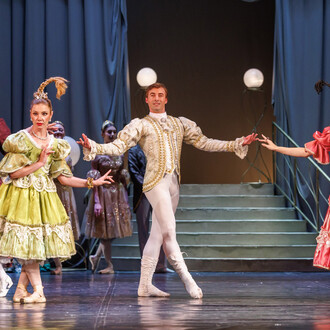Galleria Continua is pleased to present a new solo exhibition by Zhanna Kadyrova. The project comprises a series of new works specially designed for this exhibition, which revolve around the theme of home.
Its title, Mia casa, mia fortezza, (My home, my fortress) is the literal translation of a Russian proverb which expresses the concept of home as a safe place and as property. Initially, Zhanna Kadyrova focussed on video and performance art, but over the past decade she has captured the attention of the public and critics through sculpture and installation. Despite her young age, the artist has already exhibited twice in the Ukrainian pavilion at the Venice Biennale, and has also participated in the Kiev Biennale with a solo exhibition, establishing herself as leader of the younger generation of Ukrainian artists. Kadyrova’s work moves styles and languages from one context to another, and questions the role of the spectator.
The artist uses a variety of different materials to disturb our usual perception of the urban environment.
Cement, concrete and tiles, the ones that still line the walls of buildings in Ukraine, are favoured by the artist, as they were by postSoviet urban planning to remedy construction defects, calculation errors or technological shortcomings. Incorporating all the energy of “low”, bright and sparkling popular culture, the tile is the material used for Zhanna Kadyrova’s mosaics: shattered objects and sculptures, uncertain and transitory, full of nostalgia, call to mind the frailty of fame, ideologies and worldly riches. “I took a material related to Ukrainian history. Ceramic was very popular in public spaces. You would find it everywhere, including bathrooms, in the form of mosaics... it was also a way to break with academic codes. I studied at the Department of Sculpture. The education system was very conservative.
We learned to make classical sculptures – recalls the artist. - Once outside, I approached colour, first in drawings and then with ceramic tiles”. After discovering colour through the use of tiles, the artist investigated the real meaning of this material, its history, the concepts it implies. For Kadyrova, the formal re-elaboration of the Soviet mosaic tradition is also a practice that involves pondering on the laws enacted by the Ukrainian Government pursuant to the current “decommunisation” of the country: a process aimed at erasing all traces of the past, that the authorities are implementing by dismantling Soviet-era symbols and monuments, renaming streets, villages and towns, and also destroying the Soviet mosaics. The works presented by the artist in this exhibition include Experiments, a photographic series of views of Kiev, where the apparent serenity of the urban landscape is upset by stains of acid. At the San Gimignano exhibition, the formal legacy of traditional Soviet mosaics is presented through a series of new works whose topic is an aspect of the Tuscan urban landscape, namely public housing. Also in this case, Zhanna Kadyrova, engaged both socially and politically (the artist is a member of the R.E.P. - Revolutionary Experimental Space – a group, established in 2004 during the Orange Revolution in Ukraine), shows a propensity to a social analysis of the territory, offering us an attentive evaluation of the political dimension of public housing in Italy. These new works are prompted by a series of photos but, given the use of cement and gypsum, can be placed halfway between sculpture and the two-dimensionality of a painting. Kadyrova’s research on the concept of home, this time conceived as a personal space and a territory to safeguard, continues in another new work on display. Small glass bricks contain a series of photographs taken by the artist in different Ukrainian cities. It resumes the idea of the landscape, developed here as a modular architectural structure that conveys the intimacy of domestic life by peering through the window of a house. The thickness of the modules refers to the concept of vulnerability, of defence of individual space, and of one’s otherness.
Zhanna Kadyrova was born in 1981 in Brovary, Ukraine. She lives and works in Kiev. Over the past two years she has held solo exhibitions at the Bureau for Cultural Translations, Leipzig (2016); the Kunstraum Innsbruck, Innsbruck, the Art Zavod Platforma, Kiev, the School of Kyiv – Kyiv Biennial 2015 National Pedagogical Dragomanov University, Kyiv (2015). In 2014 she lived in Sao Paulo, Brazil. She participated in collective exhibitions at: Centre Georges Pompidou, Paris, MUSA, Vienna (2016); Centquatre-Paris, Paris, Ukrainian Pavilion, 56th Venice Biennale, Venice, Badischer Kunstverein, Karlsruhe, Polish Institute, Dusseldorf (2015); Saatchi Gallery, London, Architekturzentrum, Vienna, Kunstraum Lakeside, Klagenfurt, Zimmerstraße, Berlin, Museum of Moscow, Moscow (2014); Ukrainian Pavilion, 56th Venice Biennale, Palais de Tokyo, Paris, Izolyatsia, Platform for Cultural Initiatives, Donetsk, Museum of Modern Art, Warsaw (2013). She won, among others, the PinchukArtCentre Prize in 2011 and, in 2013, the Kazimir Malevich Artist Award, the Sergey Kuryokhin Modern Art Award, and the Kyiv Sculpture Project Grand prix in.












